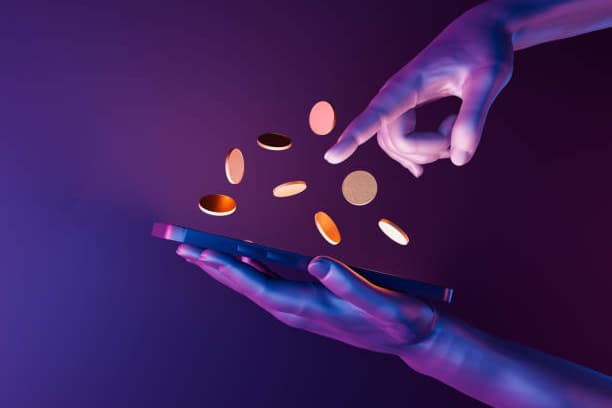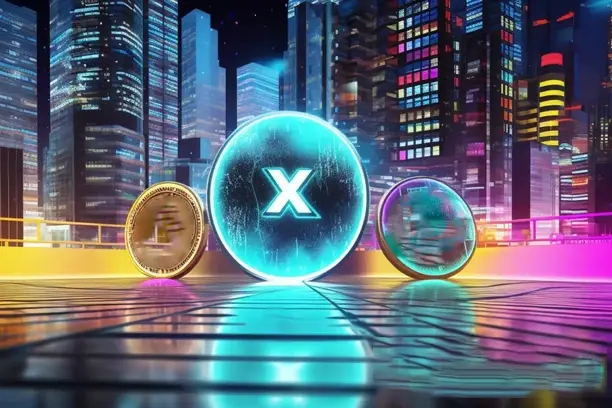A virtual currency wallet is an important tool for trading and managing cryptocurrencies and is suitable for storing, receiving and sending digital assets. For newbies, how to quickly get started with the wallet is a common question. In this article, we will help users master the basic operation of virtual currency wallets in three minutes through easy-to-understand steps, so that you can manage your digital assets safely and conveniently. Whether you choose a hot wallet or a cold wallet, we will answer the relevant operation procedures in detail, so that you can easily enter the cryptocurrency world.

What is a virtual currency wallet?
A virtual currency wallet is a tool used to store the private and public keys of cryptocurrencies (e.g. Bitcoin, Ether, etc.). It does not directly store the digital currency but stores the private key to access the assets on the blockchain. The wallet helps users to receive, send, and store digital assets and secure transactions.
There are two types of wallets: hot wallets and cold wallets. Hot wallets are online wallets connected via the Internet, which are convenient but relatively less secure, while cold wallets store private keys offline via a physical device, which is more secure but not as convenient to use as hot wallets.
How to choose the right virtual currency wallet for you?
Choosing a wallet that suits your needs is the first step into the world of cryptocurrency. The following points can help you make your decision:
- Security: If you are richer in assets, it is recommended to choose a cold wallet (e.g. hardware wallet) to secure your assets.
- Ease of use: Hot wallets are more suitable for daily transaction use, such as sending and receiving cryptocurrencies at any time via cell phone or computer.
- Supported Currency Types: Different wallets support different currencies, some wallets may only support Bitcoin and Ether, you need to check if the desired currency is supported when choosing.
- Fees: Some wallets offer free basic functionality, but may charge a fee for specific operations (such as withdrawing coins). You need to consider your usage needs when choosing one.
Create a virtual currency wallet and set it up
- Download wallet software or purchase a hardware wallet
Hot wallets are typically downloaded through the mobile app store, and common wallet apps include MetaMask, Trust Wallet, and others. Cold wallets, on the other hand, can be purchased as hardware wallets such as Ledger or Trezor. - Create Wallet
After the installation is complete, follow the prompts to create a new wallet. You will need to set a strong password and record a system-generated mnemonic (12 or 24 words). This mnemonic is the only way to recover your wallet, so be sure to keep it safe to avoid losing it. - Backup and recovery
After completing the creation, the wallet will prompt you to back up the mnemonic. It is recommended that you write your mnemonics on paper, keep them in a safe place, and avoid storing them online.
How to trade with virtual currency wallets?
- Receive cryptocurrency
Open the Wallet app, click the "Receive" button and an address will be generated. This is the address you will use to receive cryptocurrencies, and you can share it with others or use it in exchange withdrawals. - Send cryptocurrency
Select the "Send" function in the wallet and enter the address of the payee, the amount and the miner's fee (commission). After confirming that the transaction is correct, the wallet will select the appropriate miner's fee based on the speed of the blockchain network. - View Transaction History
You can view all sent and received transactions, including their status and associated fees, in the "Transaction History" section of your wallet.
How to secure your virtual currency wallet?
- Use a strong password: Set a strong password for your wallet to avoid guessing or brute-force cracking.
- Enable Dual Authentication (2FA): Enable the wallet's dual authentication feature for added security. Typically, the wallet generates a one-time password via SMS or app to verify identity.
- Regular wallet backups: Back up your wallet's private key or mnemonic on a regular basis and make sure they are stored in a secure manner to avoid loss or compromise.
- Be cautious of phishing attacks: always be vigilant and avoid clicking on links from unknown sources or giving sensitive information such as auxiliary words to others.
Virtual Currency Wallet FAQs and Answers
Why can't I successfully send or receive cryptocurrency?
- Network problems: Check if your internet connection is working.
- Insufficient miner's fee: When sending cryptocurrencies, if the miner's fee is set too low, the transaction may be delayed or failed, it is recommended to increase the miner's fee appropriately.
- Incorrect wallet address: Make sure there are no errors in the recipient address, especially if letters and numbers are entered correctly.
How do I recover my lost virtual currency wallet?
If you have lost access to your wallet (e.g. lost your password or cell phone), you can restore your wallet using the mnemonic, as long as you still have the mnemonic. Open the Wallet app, select "Restore Wallet" and enter the mnemonic to restore access.
How can I avoid losing my private key in my wallet?
The private key is the heart of your wallet, and losing it means you'll never be able to access the assets in your wallet. Ensure that your private key is stored securely and back it up in multiple places, such as paper backups and hardware storage.
summarize
Virtual currency wallets are a central tool for digital asset management, and understanding and mastering their basic operation is crucial for every cryptocurrency user. From choosing the right wallet, to learning how to receive and send transactions, to securing your wallet, mastering these basics will enable you to manage your crypto assets efficiently and securely. During the process, remember "safety first" and always stay alert to avoid getting caught up in online scams. With continued practice, you will become more proficient in using your wallet and enjoy the convenience and security that digital currency brings.







